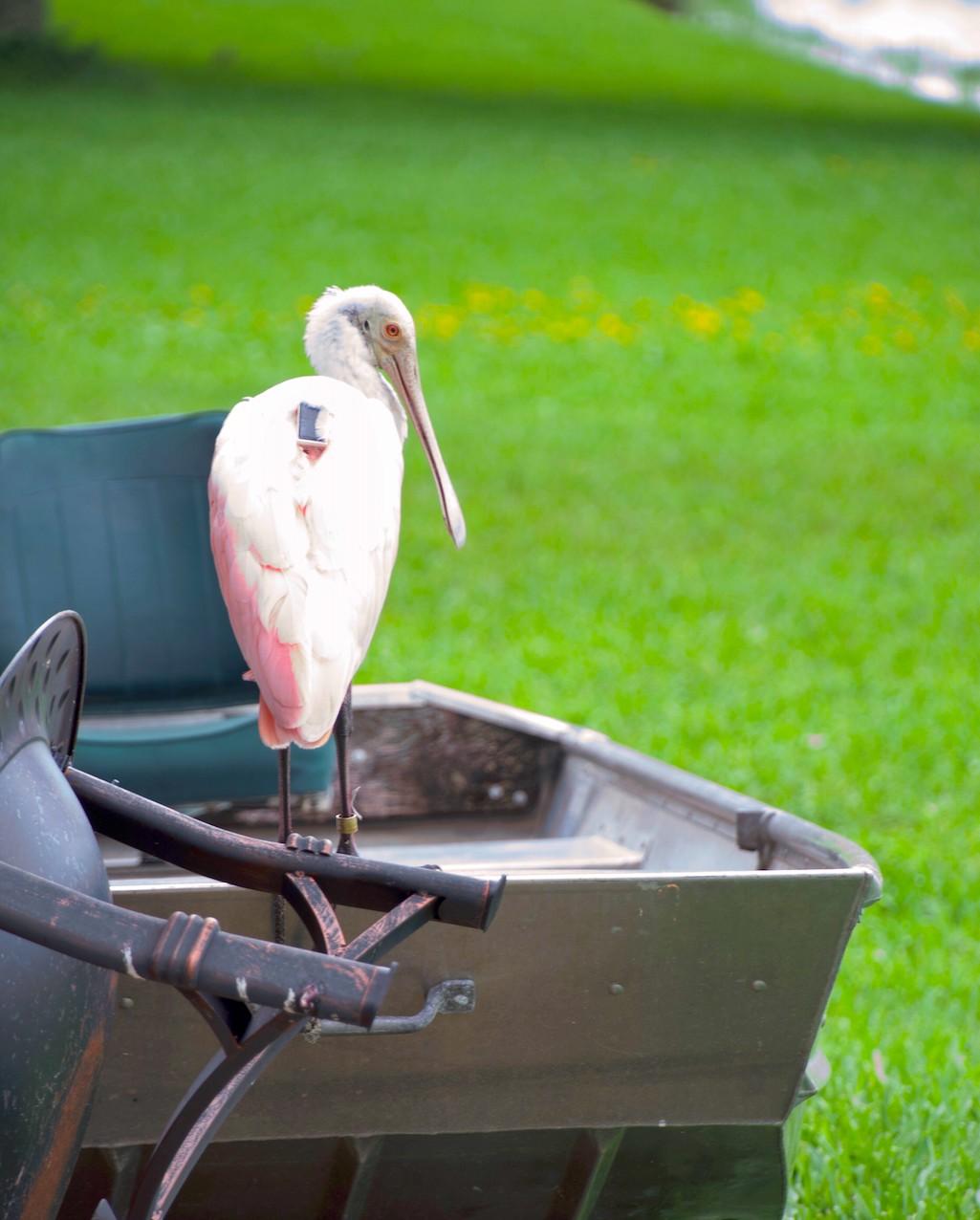
Tracking George the Spoonbill/Courtesy of Bernadette Guilbert
George is a busy Roseate Spoonbill. About four years old, he spends his days foraging for fish and moving throughout South Florida. For much of 2021, as evenings approached he retreated to roosting trees within Everglades National Park, waiting out the night in the safety of the raised branches.
How do we know?
George wears a tracker, part of an ongoing study at the Audubon Everglades Science Center.
Spoonbill were “very common in parts of the Southeast until the 1860s, [when] spoonbills were virtually eliminated from the United States as a side-effect of the destruction of wader colonies by plume hunters,” Ken Kauffman explains in Lives of North American Birds. “[They] began to re-colonize Texas and Florida early in 20th century… [but] are still vulnerable to degradation of feeding and nesting habitats,” he continues.
Roseate Spoonbills are the “canary in the coal mine” for the Everglades. Because this species has a clear relationship with hydrologic conditions in the River of Grass, the colorful wading birds can tell us if restoration is successful farther upstream. They also provide warning signals for upcoming changes or shifts to an ecosystem, including rising seas.
ESC has launched a new project to use cellular transmitters on spoonbills to provide new insights into their behaviors in remote Florida Bay.
The Audubon Roseate Spoonbill study has three key elements:
1. Tracking adult birds to learn more about their movements.
2. Conducting surveys and monitoring efforts of colonies in Florida Bay during nesting season to capture nesting and general population data.
3. Advocating for significant public policy changes.
Audubon data and analyses guide decision-makers in restoration and water management decisions to improve this important habitat for spoonbills and other wildlife.
“George left Everglades National Park around June,” Alex Blochel, senior biologist for ESC, explains. “Before leaving he flew down to Florida Bay to have a look. Then he turned around and bee-lined it to the Everglades Wildlife Management Area (that’s roughly 80 km!). He had a little rest for a couple of days, then continued his adventure north, stopping occasionally for rest and some food before arriving in Boynton Beach.”
Remote tracking technology is unlocking a world of information about the movements, routines, and habitat preferences of Florida’s iconic spoonbills. This technology will enhance ongoing efforts to understand the effects of climate change, sea level rise, and Everglades restoration efforts on these charismatic Florida birds.
Already the trackers have revealed a colony that had never been discovered. Audubon staff are also seeing that, while nesting, they are using different habitats for foraging. For example, they are using more ponds inside bay keys than the mangrove wetlands on the mainland that they historically preferred.
Click here to learn more about the Audubon study, and here to learn more about spoonbill conservation efforts.
For now, the Audubon team is waiting to see when George will return to Everglades National Park. Already spoonbills are shifting their range northward in response to habitat destruction, changing water conditions, and climate change. Audubon modeling predicts they will shift even farther to find the right places to feed and raise their young.
Will George be one of them?



Comments
Is George actually missing? It wasn't quite clear from the piece. If by chance George is missing, perhaps he has landed in Saline, Michigan. We had a Roseate Spoonbill show up here in town last week! Here is a news article: https://thesalinepost.com/g/saline-mi/n/35512/roseate-spoonbill-salines-...